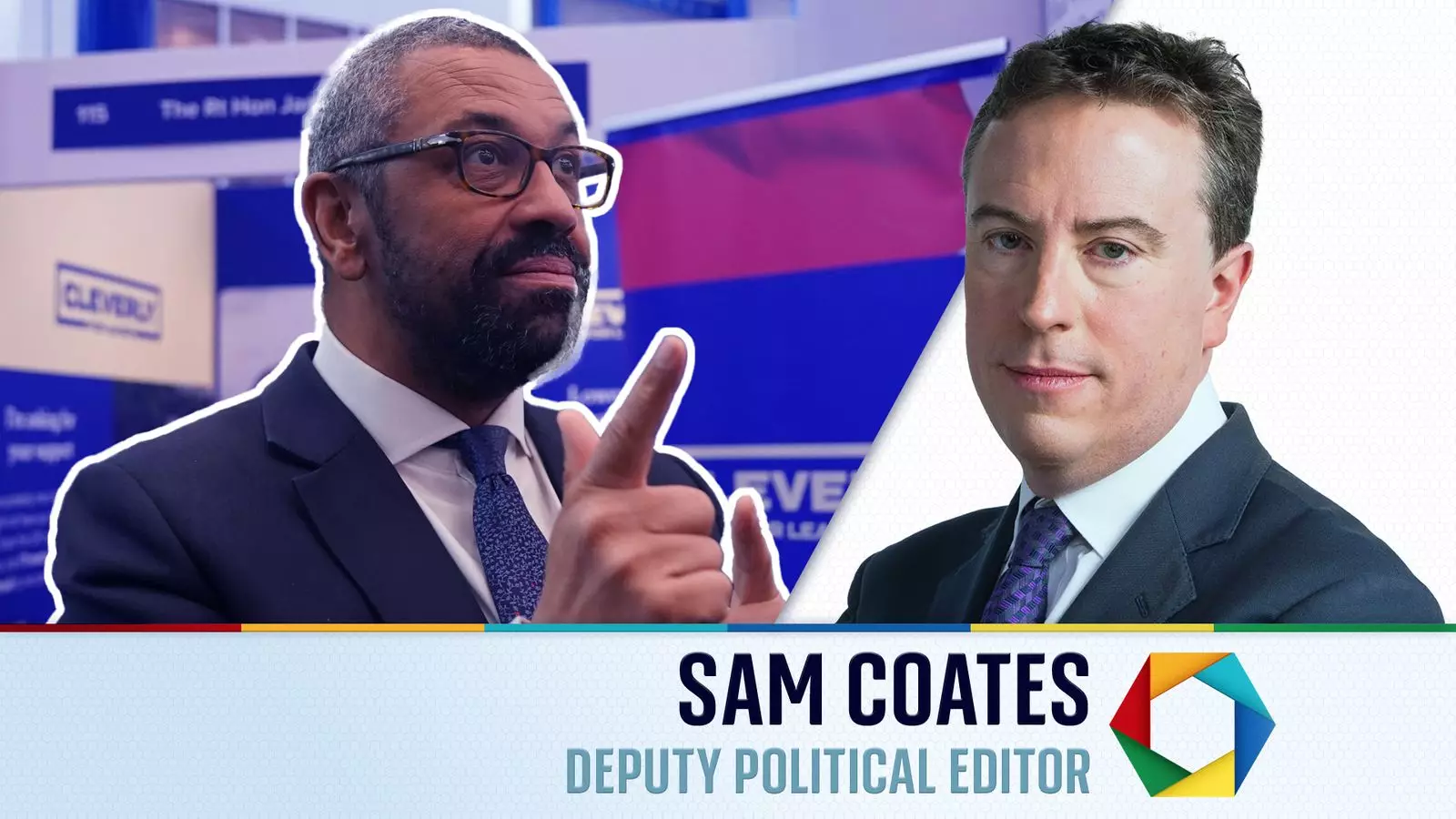In the ever-evolving landscape of the Tory leadership contest, recent events have highlighted a noticeable shift in momentum, particularly following James Cleverly’s impressive performance at the party conference. Cleverly’s engaging address not only resonated positively among party members, but it also showcased a strategic communication effort aimed at rejuvenating the Conservative Party’s public image. However, while Cleverly has surged to the forefront, the race remains unpredictable, with multiple contenders still vying for a chance to claim leadership.
James Cleverly’s elevation within the leadership race is no fluke; it stems from a carefully crafted speech that aimed to unite and energize party members. The positivity conveyed in his address has evidently played a pivotal role in garnering support, positioning him as a unifying candidate who appeals to various factions within the party. Nevertheless, this surge does not guarantee his victory, as the contest remains competitive and unpredictable. The critical upcoming knockout round will further scrutinize each candidate’s viability before the decision is handed over to the approximately 170,000 Conservative members.
Cleverly’s current stance is bolstered by surveys suggesting a favorable perception among Tory MPs, yet it’s essential to scrutinize how his strategies might impact the final outcome. Will he manage to maintain this lead given the close competition with other candidates, particularly Robert Jenrick and Kemi Badenoch? The consensus is yet to emerge, making it clear that while Cleverly’s position is strong, the path ahead is fraught with challenges.
Kemi Badenoch’s approach highlights her intentions to consolidate support from the more right-leaning factions of the party. By asserting that the “right of the Conservative Party needs to coalesce around her,” Badenoch’s bold strategy seems to signal a clear focus on capturing the support of those disillusioned by previous leadership, particularly those aligned with the European Research Group (ERG). However, her tactics may come with risks. Instead of broadening her appeal to encompass a wider range of Tory voters, she appears to be isolating herself within a specific ideological subset. This could hamper her chances, especially as Tom Tugendhat’s supporters largely represent a more centrist, one-nation Conservative perspective.
Furthermore, the ongoing rivalry for votes among Badehoch and the other contenders illustrates the fractured nature of party unity that currently plagues the Conservative Party. The stark divisions may prevent her from garnering the broader support needed to ascend to the leadership position.
On the opposite end of the spectrum, Robert Jenrick’s campaign appears to be losing steam. Recent rounds saw a reduction in the number of votes he garnered, suggesting that the conference may not have positively influenced his standing within the party. Despite expectations from his supporters for a more robust showing, reality seems to have fallen short. Interestingly, Jenrick’s underwhelming speech at the conference might have cost him crucial support, illustrating that public reception plays a vital role in this contest.
As candidates vie for positional advantage, Jenrick’s drop in support opens doors for other contenders, particularly Cleverly, who may view this as an opportunity to engineer the final round strategically. With pressures mounting, it will be crucial for Jenrick to revitalize his campaign and clarify his message if he aims to regain lost ground.
Despite polling indicating varying levels of popularity among candidates, the crux of the contest resides in understanding what Tory members prioritize in their potential leader. A recent YouGov poll reveals that integrity, honesty, and adherence to conservative values top their list of desired qualities, rather than mere electoral success. This insight underscores the unpredictable nature of the contest; even candidates with substantial backing among MPs may falter if they fail to resonate with the broader membership base.
As the leadership race unfolds, the intricate interplay of strategies, values, and public perception will be pivotal in determining the ultimate leader of the Conservative Party. While the momentum of Cleverly might appear formidable at this stage, understanding the evolving political landscape will be crucial for all contenders as they engage in this high-stakes competition. It remains to be seen who will emerge victorious, but one thing is evident: the road ahead is laden with uncertainty, and each candidate must navigate it carefully to secure their place at the forefront of the party.



Leave a Reply